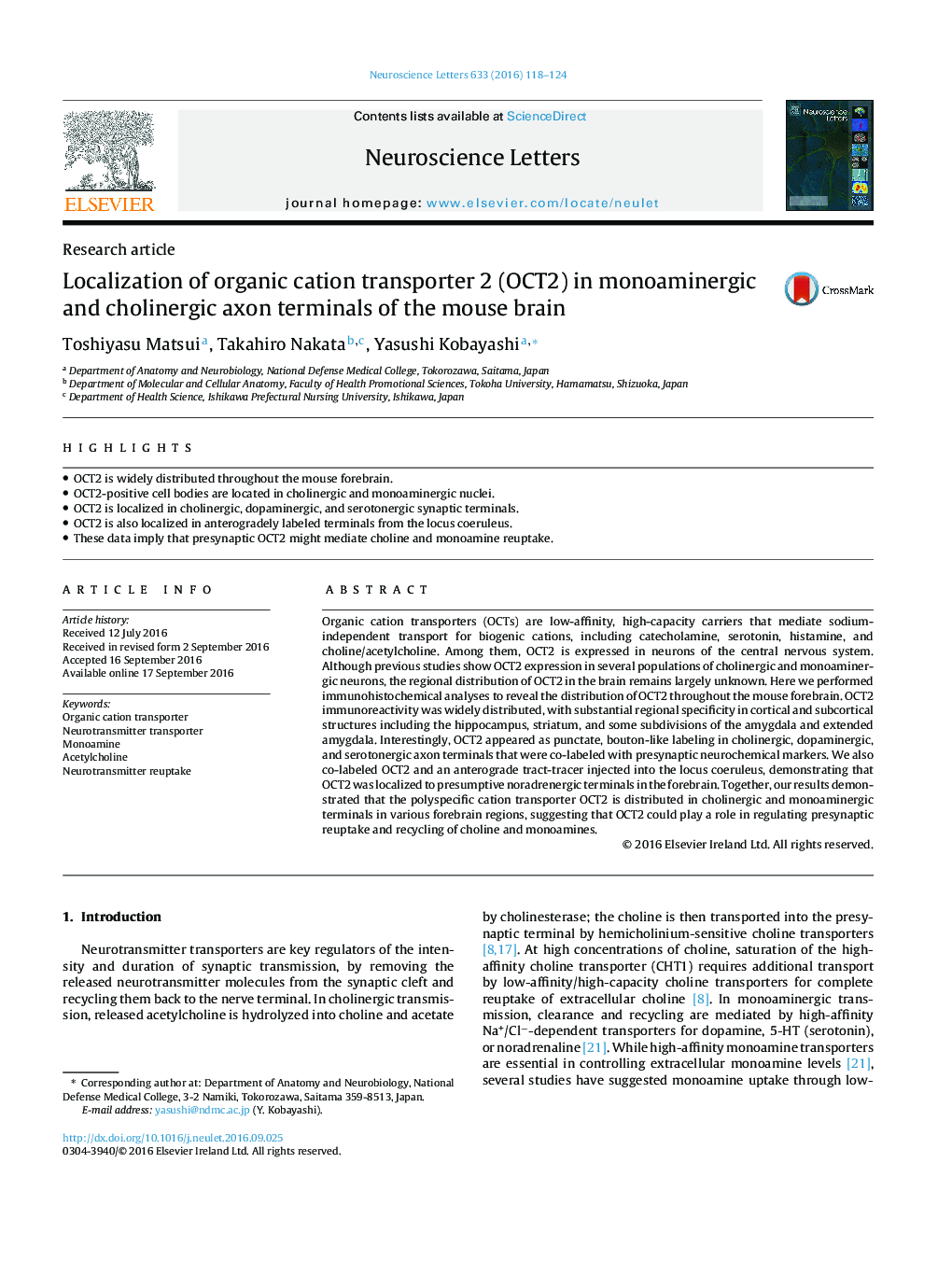| Article ID | Journal | Published Year | Pages | File Type |
|---|---|---|---|---|
| 6279017 | Neuroscience Letters | 2016 | 7 Pages |
Abstract
Organic cation transporters (OCTs) are low-affinity, high-capacity carriers that mediate sodium-independent transport for biogenic cations, including catecholamine, serotonin, histamine, and choline/acetylcholine. Among them, OCT2 is expressed in neurons of the central nervous system. Although previous studies show OCT2 expression in several populations of cholinergic and monoaminergic neurons, the regional distribution of OCT2 in the brain remains largely unknown. Here we performed immunohistochemical analyses to reveal the distribution of OCT2 throughout the mouse forebrain. OCT2 immunoreactivity was widely distributed, with substantial regional specificity in cortical and subcortical structures including the hippocampus, striatum, and some subdivisions of the amygdala and extended amygdala. Interestingly, OCT2 appeared as punctate, bouton-like labeling in cholinergic, dopaminergic, and serotonergic axon terminals that were co-labeled with presynaptic neurochemical markers. We also co-labeled OCT2 and an anterograde tract-tracer injected into the locus coeruleus, demonstrating that OCT2 was localized to presumptive noradrenergic terminals in the forebrain. Together, our results demonstrated that the polyspecific cation transporter OCT2 is distributed in cholinergic and monoaminergic terminals in various forebrain regions, suggesting that OCT2 could play a role in regulating presynaptic reuptake and recycling of choline and monoamines.
Related Topics
Life Sciences
Neuroscience
Neuroscience (General)
Authors
Toshiyasu Matsui, Takahiro Nakata, Yasushi Kobayashi,
